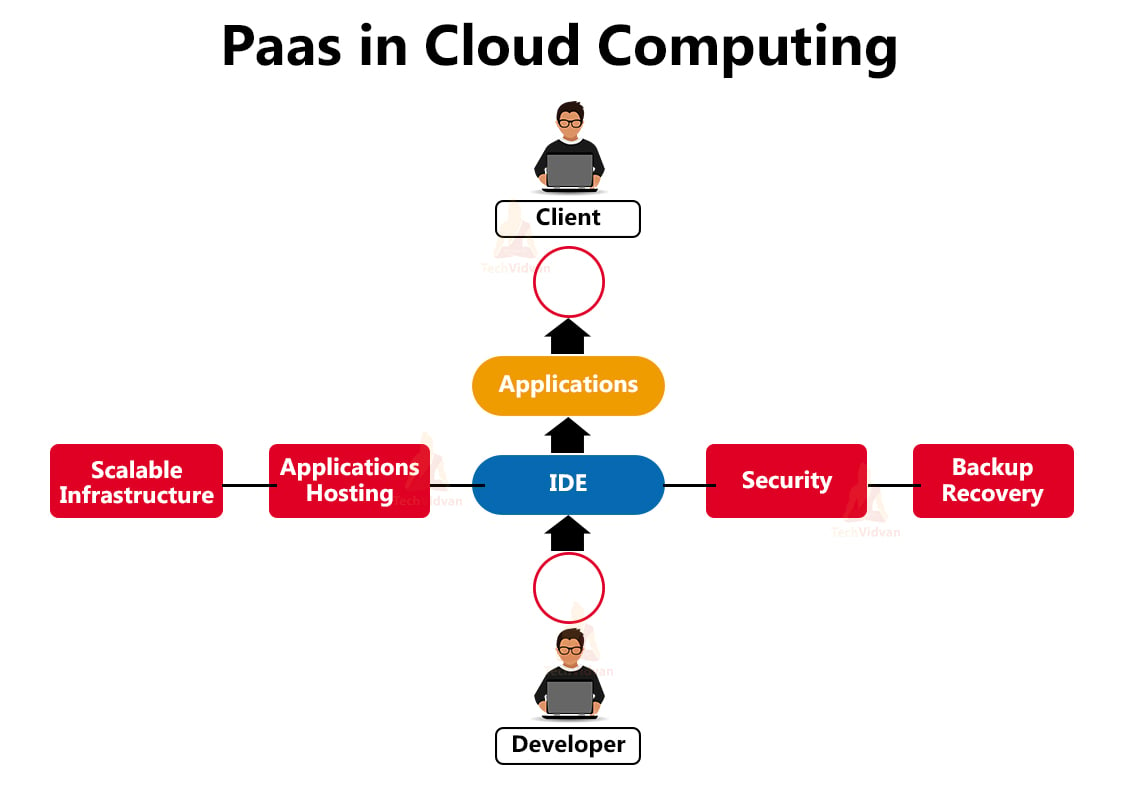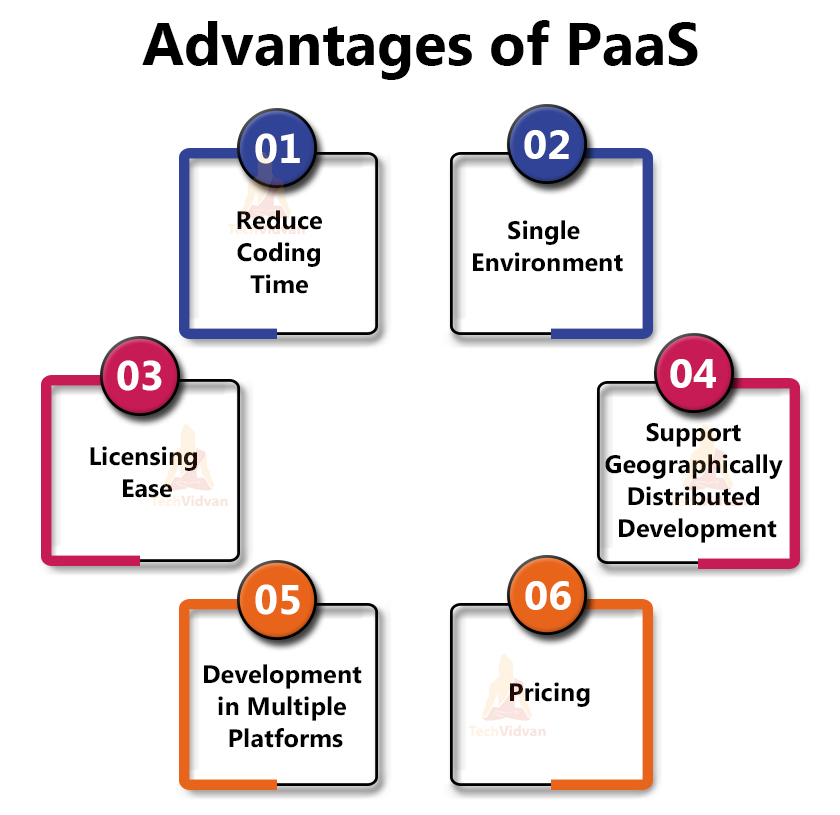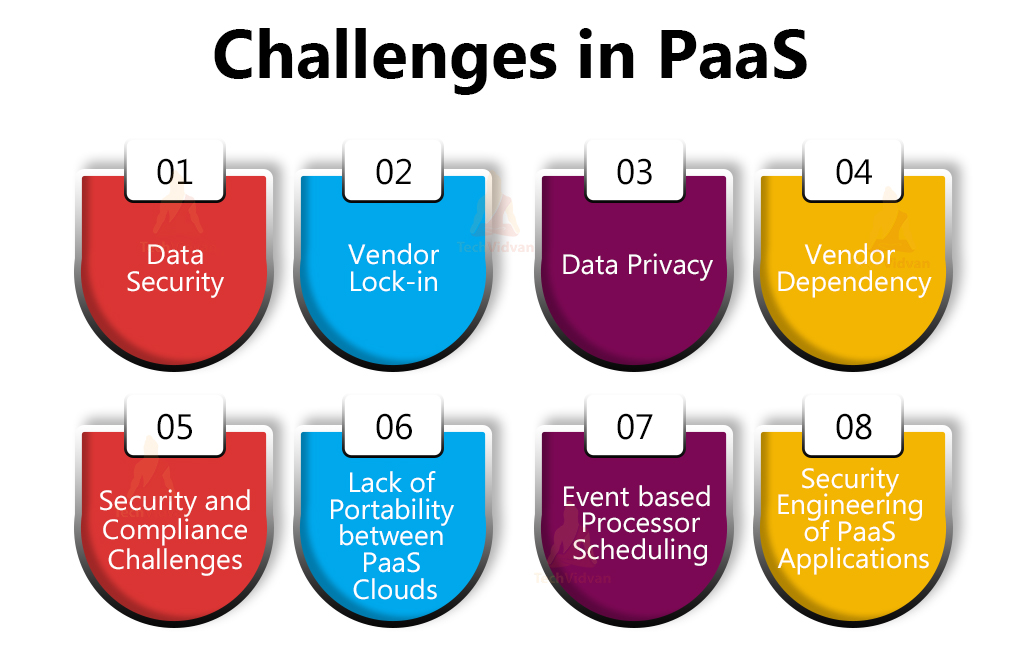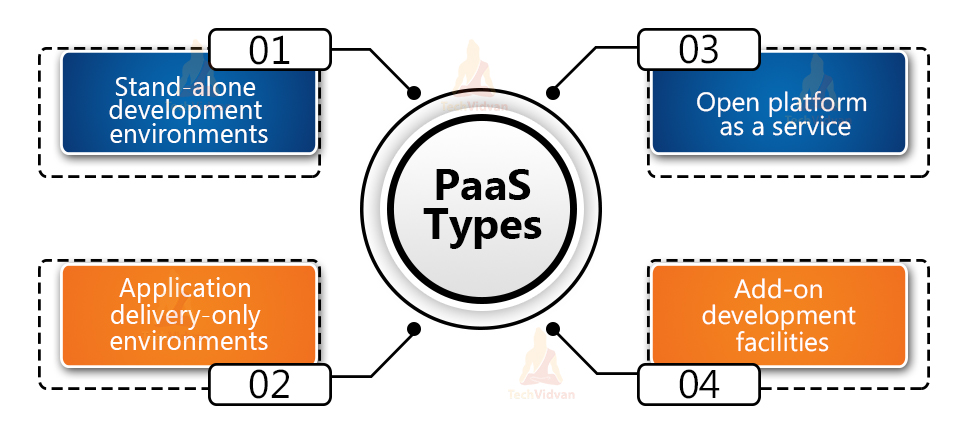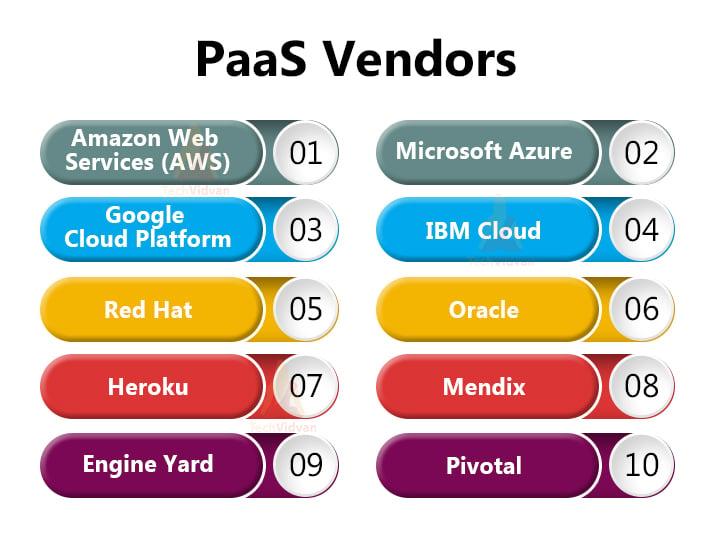Cloud Computing- PaaS
Hello Reader. As we know, there are a variety of services available in Cloud Computing. So today, we will look at one of the most essential services of Cloud Computing known as Platform-as-a-Service. PaaS provides developers with an entire, flexible, and cost-efficient cloud platform for developing, running, and managing applications. So let us begin.
What is PaaS?
In the world of Cloud Computing, PaaS stands for Platform-as-a-Service. This service provides the customers with the entire set of cloud platforms, such as the hardware, software infrastructure. In PaaS, the developers usually rent the requirements from the cloud vendors to build an application. The tools in PaaS are convenient and straightforward to use.
Programming Languages
PaaS vendors offer multiple programming languages for the developers to develop the applications. Some of the most renowned programming languages offered are as follows:
- Java
- PHP
- Ruby
- GO
Application Frameworks
PaaS vendors offer application frameworks that help to quickly understand the application development. Some famous application frameworks offered by the PaaS vendors are as follows:
- Node.JS
- Drupal
- Joomla
- WordPress
- Spring
- Play
- Rack
- Zend
Database
On PaaS, the users get different types of databases, such as
- ClearDB
- PostgreSQL
- MongoDB
- Redis
Other Tool Set
PaaS vendors offer several tools which are essential for the development, test and deployment of the application.
What is included in PaaS?
Below is the list which is included in PaaS for the developers, and they are as follows:
1. Development Tools
The cloud vendors provide different tools which are necessary for developing the software. It also includes a source code editor, debugger, compiler, and other essential tools. Some special tools will be dependent upon the Cloud vendor, but in PaaS, developers find everything necessary for software development.
2. Infrastructure
PaaS is the top layer from IaaS and includes everything and every feature of IaaS. In simple words, PaaS will take the responsibility to manage servers, storage, data center, and network resources.
3. Middleware
PaaS generally consists of Middleware so that the developers do not have the headache of building it by themselves. Basically, Middleware is the software allocated in the middle of the machine’s user-based applications and operating systems. Middleware plays a crucial role in running an application, but end users will not interact with it.
4. Operating System
It is the responsibility of PaaS to provide the users with an operating system and look after its maintenance so that the developers can focus on their development to run an application.
5. Databases
PaaS will maintain databases, and also it will provide the developers of an organization with database management tools.
Advantages of PaaS
1. Reduce Coding Time
The development tools in PaaS will help the developers code and develop new applications. There are pre-coded components to build an application.
2. Single Environment
PaaS allows developers to build, test, debug, deploy, host, and update applications in the same environment. This feature helps the developers be sure about web applications, and they will run properly as hosted before the official release. It also clarifies the development cycle of an application and helps to launch the application quickly .
3. Licensing Ease
PaaS providers will manage the licenses of operating systems, development tools, and everything available on their platform.
4. Support Geographically Distributed Development
As the development environment is accessed and managed over the internet, the development team can combine together on some critical projects, even if the team members are located in different locations worldwide.
5. Development in Multiple Platforms
Some service providers like AWS, Azure, and GCP will provide development options for multiple platforms such as computers, mobiles, and browsers, which quickly develop cross-platform applications.
6. Pricing
PaaS is less expensive than leveraging IaaS in many cases. Overhead is reduced because PaaS customers do not have the stress to manage virtual machines. Additionally, some providers have a pay-as-you-go pricing structure, during which the seller only charges for the computing resources employed by the appliance, usually saving customers money.
However, each vendor features a slightly different pricing structure, and a few platform providers charge a flat fee per month.
Challenges in PaaS
1. Data Security
The organizations transfer their entire application to Cloud. It will result in uploading private data which may have sensitive or crucial information. Thus, the Cloud vendor takes the responsibility to protect the user’s sensitive data. Therefore it is essential to trust the cloud vendor.
2. Vendor Lock-in
The user must develop the applications dependent on the platform offered by the cloud vendor in (PaaS). Thus, sometimes the users may face an issue while migrating the application to any other PaaS vendor in the market.
3. Data Privacy
In Cloud, there is always a risk of Data Privacy as the organization’s crucial information will not be available in their infrastructure.
4. Integration with the rest of the System’s Application
The user locally builds few applications, and some applications are created in the Cloud environment. Thus, the user might experience some difficulties. And in some scenarios, there are issues when the user wishes to make use of the data available in the Cloud and the local data.
5. Vendor Dependency
There are various practices and resources available in developing PaaS vendors that might make the organizations reserved for their current Cloud vendors.
A minor change in the internal process of the cloud vendor or change in the infrastructure will massively impact the application’s performance which is designed to run efficiently on the previous configuration.
Also, if there is a change in the pricing model, the application cost might be expensive.
6. Security and Compliance Challenges
In PaaS, it is the cloud vendor’s responsibility to store most or most of the application’s data along with its hosting code. In some scenarios, the user might firmly hold the databases with an additional third party, an IaaS vendor.
Many PaaS vendors are massive companies (like Amazon, Google, and Microsoft) with robust security. It is not easy to scan and test the safety measures to protect the applications and user data.
The organizations must build strict data security rules, and verifying the compliance to add third-party vendors will increase challenges while entering the competitive industry.
7. Lack of Portability between PaaS Clouds
Standard languages are utilized for implementation but in some cases platform services may differ.
8. Event based Processor Scheduling
The PaaS applications are based on events which create resource constraints in applications and they have to just answer the request in a given time span.
9. Security Engineering of PaaS Applications
As PaaS applications are dependent on the network they should use cryptography and maintain the security vulnerabilities.
Common PaaS Scenarios
1. Development framework
PaaS offers a framework for the developers to customize the cloud applications. PaaS allows developers to develop applications with built-in software components.
The amazing features of Cloud such as Scalability, high-availability and multi-tenant abilities are included which reduces the coding duration for the developers.
2. Analytics or business intelligence
Organizations use the tools which are offered in PaaS for analyzing and mining the data. They can also search insights, patterns and can predict the outputs which helps in developing the forecasting, designing the products, profits and further business decisions.
3. Additional services
PaaS vendors offer some additional set of services to enhance the applications like their workflow, directory, security and scheduling.
Characteristics of PaaS
- PaaS provides users with a browser-based environment for development purposes. It will authorize the developers to build databases and edit the application code with API or Point and available Point-and-click-tools.
- PaaS offers features like built-in security, scalability and web service interfaces.
- PaaS will also give amazing built-in tools for defining the workflow, approval process and rules of the business.
- With the help of PaaS, it is easy for the users to integrate other applications on one platform.
- PaaS will also offer the user with web service interfaces which permits them to connect with the applications which are available outside the platform.
PaaS Types
1. Stand-alone development environments
The first type of PaaS stand-alone runs as an independent entity for the particular function. It will not include the licenses or any technical dependencies on some particular SaaS Applications.
2. Application delivery-only environments
In PaaS, application delivery includes on-demand scaling along with the security of an application.
3. Open platform as a service
In PaaS, developers get an open-source software which helps PaaS vendors to run the applications on their platform.
4. Add-on development facilities
On PaaS there is an additional set of features which helps the developers to customize the existing SaaS platform.
PaaS Vendors
Below is the list of some popular renowned PaaS vendors, and they are as follows:
- Amazon Web Services (AWS)
- Microsoft Azure
- Google Cloud Platform
- IBM Cloud
- Red Hat
- Oracle
- Heroku
- Mendix
- Engine Yard
- Pivotal
Google App Engine (GAE)
The services offered are as follows:
- App Identity
- URL Fetch
- Cloud storage client library
- Log service
Salesforce.com
The services offered by Salesforce.com are as follows:
- Faster implementation
- Rapid scalability
- CRM Services
- Sales cloud
- Mobile connectivity
- Chatter
Windows AZURE
The services offered by Windows AZURE are as follows:
- Compute
- Security
- IoT
- Data Storage.
AppFog
The services offered by AppFog are as follows:
- Justcloud.com
- SkyDrive
- GoogleDocs
Openshift
The services offered by Openshift are as follows:
- RedHat
- Microsoft Azure
Cloud Foundry from VMware
The services offered by Cloud Foundry from VMware
- Data, Messaging, and other services.
How is Platform-as-a-Service different from Serverless Computing?
PaaS and serverless computing are very similar. Every developer has to worry about writing and uploading code, and therefore the vendor handles all backend processes. The scaling factor is very different from Serverless Computing.
Applications built using serverless computing, or FaaS, will scale automatically, while PaaS applications won’t unless programmed to try to do so.
There is also a difference in startup time. The serverless applications are often up and running almost instantly. PaaS applications are similar to traditional applications and require running most of the time or all of the time to be immediately available for users.
Another difference is that serverless vendors don’t provide development tools or frameworks, as PaaS vendors do. And eventually, pricing separates the two models.
PaaS billing is not precise as in serverless computing, during which charges are weakened to a couple of a second for every instance of a running function.
Summary
Cloud Vendors provide rich and scalable PaaS solutions for developing Cloud-based applications from scratch. Or PaaS helps the developers to update and modernize the existing applications to benefit from the flexibility and scalability of cloud computing.

